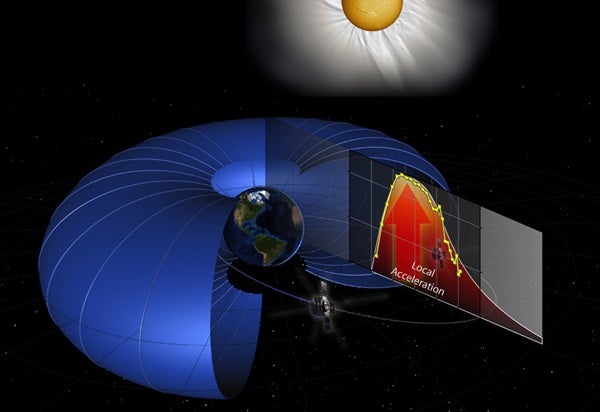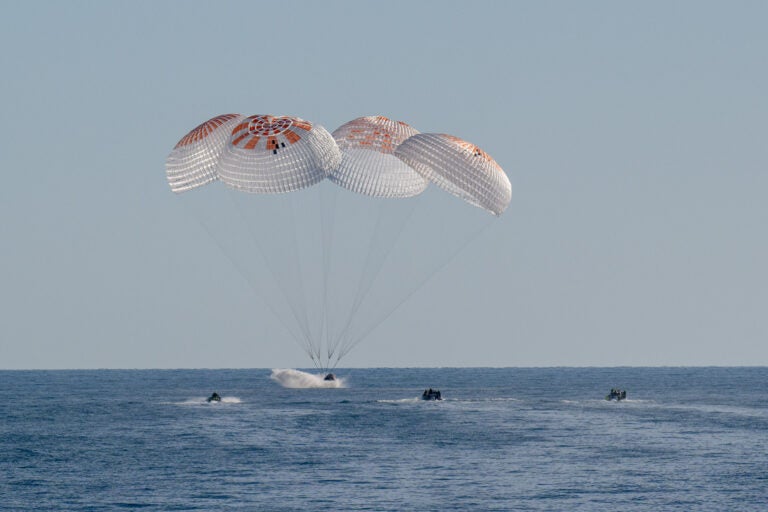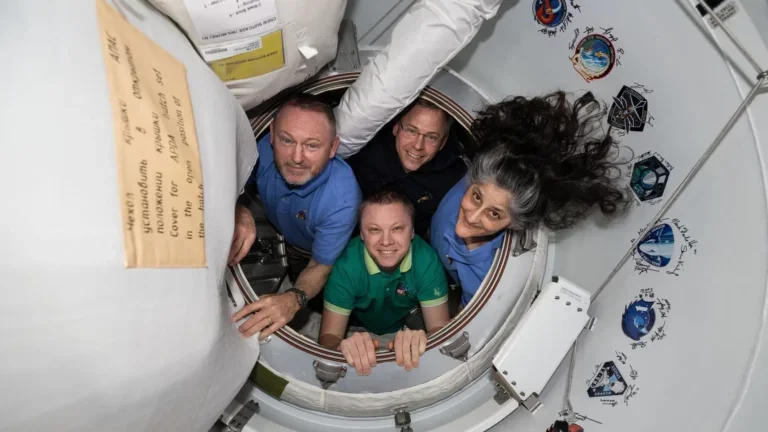New results from NASA’s Van Allen probes show the acceleration energy is in the belts themselves. Local bumps of energy kick particles inside the belts to ever-faster speeds, much like a well-timed push on a moving swing. Knowing the location of the acceleration within the radiation belts will help scientists improve predictions of space weather, which can be hazardous to satellites near Earth.
“Until the 1990s, we thought the Van Allen belts were pretty well-behaved and changed slowly,” said Geoff Reeves from Los Alamos National Laboratory in Los Alamos, New Mexico. “With more and more measurements, however, we realized how quickly and unpredictably the radiation belts change. They are basically never in equilibrium but in a constant state of change.”
In order for scientists to understand such changes better, the twin Van Allen probes fly straight through this intense area of space. One of the top priorities for the mission is to understand how particles in the belts are accelerated to ultra-high energies.
By taking simultaneous measurements with advanced technology instruments, the Van Allen probes were able to distinguish between two broad possibilities on what accelerates the particles to such amazing speeds. The possibilities are radial acceleration or local acceleration. In radial acceleration, particles are transported perpendicular to the magnetic fields that surround Earth, from areas of low magnetic strength far from Earth to areas of high magnetic strength closer to Earth. Physics dictates particle speeds in this scenario will increase as the magnetic field strength increases. The speed of the particles would increase as they move toward Earth, much the way a rock rolling down a hill gathers speed due to gravity.
The local acceleration theory proposes the particles gain energy from a local energy source, similar to the way warm ocean water can fuel a hurricane above it.
Reeves and his team found they could distinguish between these two theories when they observed a rapid energy increase in the radiation belts. The observations did not show an intensification in particle energy starting at high altitude and moving gradually toward Earth, as would be expected in a radial acceleration scenario. Instead, the data showed an increase in energy that started right in the middle of the radiation belts and gradually spread both inward and outward, implying a local acceleration source. The research shows this local energy comes from electromagnetic waves coursing through the belts, tapping energy from other particles residing in the same region of space.
“These new results go a long way towards answering the questions of where and how particles are accelerated to high energy,” said Mona Kessel, Van Allen probes program scientist in Washington, D.C. “One mission goal has been substantially addressed.”
The challenge for scientists now is to determine which waves are at work. The Van Allen probes, which are designed to measure and distinguish between many types of electromagnetic waves, will tackle this task, too.










